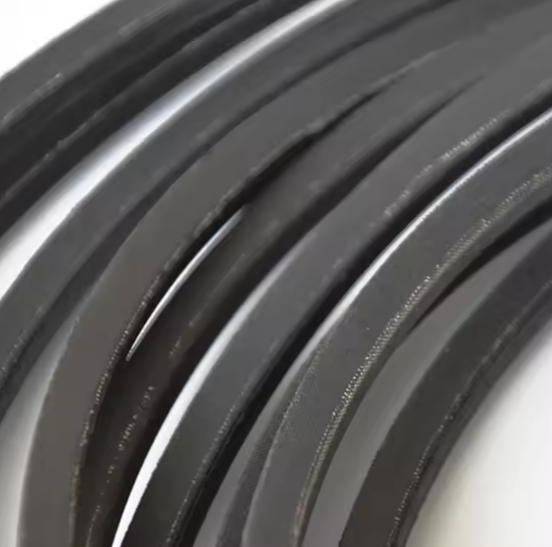
High-Performance Gear Systems | Custom Solutions for Heavy-Duty Applications
Browse our precision-engineered gearboxes, hydraulic spindles, and cast housings – designed for extreme durability, 30% longer lifespan, and seamless OEM integration.A Classical V-Belt is a power transmission belt with a trapezoidal cross-section designed to fit into the sheaves of pulleys in industrial machinery, automotive systems, and agricultural equipment. It is one of the most common and reliable types of belts used globally for transferring motion and power between shafts. The "Classical" designation refers to its standardized dimensions and widespread adoption across various industries, offering excellent grip, efficiency, and durability under typical operating conditions.
Below is a detailed table outlining the standard parameters for Classical V-Belts, based on industry norms such as ISO 4184 and RMA standards. These parameters help in selecting the right belt for specific applications.
| Belt Type (Based on Cross-Section) | Top Width (inches) | Height (inches) | Angle (Degrees) | Minimum Pulley Diameter (inches) | Power Range (HP) | Common Lengths (inches) |
|---|---|---|---|---|---|---|
| A | 1/2 | 11/32 | 40 | 3.0 | Up to 5 | 25 to 130 |
| B | 21/32 | 7/16 | 40 | 5.4 | 5 to 15 | 35 to 160 |
| C | 7/8 | 17/32 | 40 | 9.0 | 15 to 50 | 50 to 200 |
| D | 1 1/4 | 3/4 | 40 | 13.0 | 50 to 150 | 80 to 240 |
| E | 1 1/2 | 29/32 | 40 | 21.6 | 150+ | 120 to 300 |
Additional parameters include tension ratings, which vary by belt type and length. For example, a standard A-type belt might have a recommended tension force of 100-200 lbs depending on the application. Always refer to manufacturer guidelines for precise specifications.
Classical V-Belts are typically made from:
These materials ensure the belt can handle dynamic loads, temperatures from -30°C to 85°C (-22°F to 185°F), and moderate exposure to oils and chemicals.
Classical V-Belts are used in numerous industries, including:
What is the difference between Classical V-Belts and other belt types like Wedge or Synchronous belts?
Classical V-Belts have a trapezoidal cross-section and rely on friction for power transmission, making them cost-effective for general use. Wedge belts are narrower and higher capacity, while synchronous belts (timing belts) have teeth for precise motion control without slip.
How do I determine the correct size for a Classical V-Belt?
Measure the old belt's top width and height to match the type (A, B, C, etc.), and use a belt length tool or formula based on pulley diameters and center distance. Always consult the equipment manual or a sizing chart for accuracy.
What causes Classical V-Belts to wear out quickly?
Common causes include misalignment of pulleys, improper tension (too tight or loose), exposure to excessive heat or chemicals, and overloading beyond the belt's power rating. Regular maintenance and correct installation can prolong life.
Can I replace a single belt in a multiple-belt drive system?
No, it is recommended to replace all belts in a matched set simultaneously to ensure even tension and prevent uneven wear, which can lead to premature failure and reduced efficiency.
How often should Classical V-Belts be inspected?
Inspect belts every 3-6 months for signs of wear, such as cracking, glazing, or fraying. In high-use environments, more frequent checks may be necessary. Replace belts if any damage is detected to avoid downtime.
Are Classical V-Belts suitable for high-speed applications?
Yes, but with limitations. They can operate at speeds up to 6,500 feet per minute (fpm), but for very high speeds, synchronous belts might be preferred to avoid slip and maintain precision.
What maintenance practices extend the life of a Classical V-Belt?
Ensure proper alignment and tension, keep pulleys clean and free of debris, avoid exposure to oils and solvents, and store spare belts in a cool, dry place away from direct sunlight to prevent degradation.
Can Classical V-Belts be used in outdoor or wet environments?
Yes, but choose belts with oil-resistant or weather-resistant covers. However, prolonged exposure to moisture or UV radiation may reduce lifespan, so consider protective covers or regular inspections.
What is the typical lifespan of a Classical V-Belt?
Under ideal conditions, Classical V-Belts can last 3-5 years or 15,000-20,000 operating hours. Lifespan varies based on load, speed, environment, and maintenance practices.
How do I tension a Classical V-Belt correctly?
Use a tension gauge to apply the recommended force—usually deflecting the belt 1/64 inch per inch of span length under moderate pressure. Refer to the manufacturer's tension table for specific values based on belt type and application.

Copyright © Raydafon Technology Group Co.,Limited All Rights Reserved.